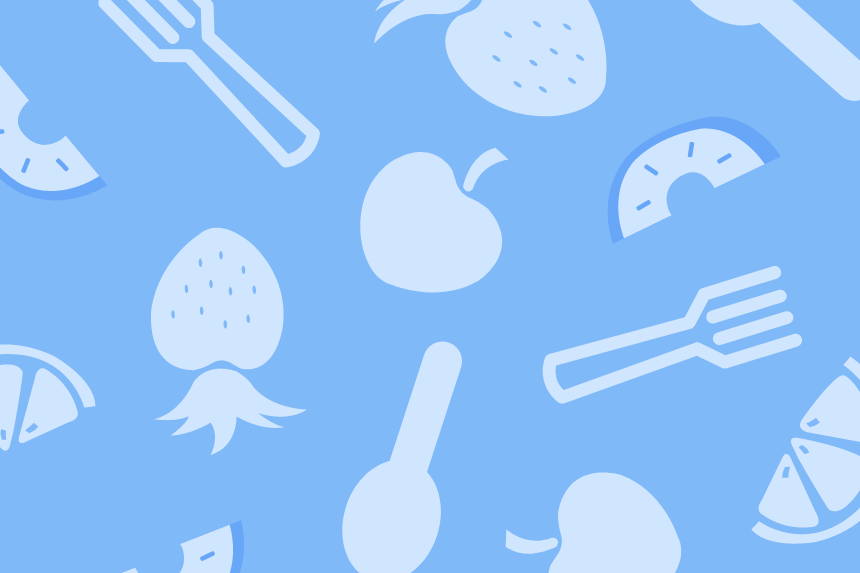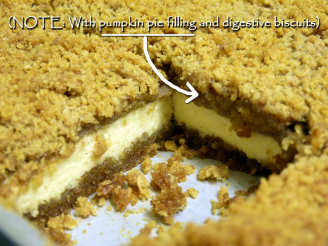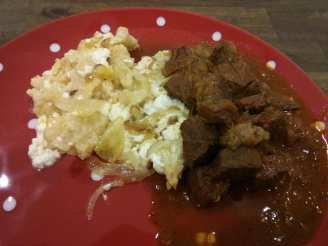Quark (German Cheese)

- Ready In:
- 24hrs 15mins
- Ingredients:
- 2
- Yields:
-
1/2 Pound
ingredients
- 4 4 tablespoons wine vinegar or 5 tablespoons fresh lemon juice
- 2 quarts whole milk
directions
- You will need a saucepan, a bowl, a sieve, and a scalded cloth to line sieve.
- If using yogurt, bring the milk to a boil and then leave it to cool to finger temperature (100°F).
- Mix the milk with the yogurt in a basin.
- Put in a warm place for 4 to 5 hours to set as solid as yogurt.
- If using vinegar or lemon juice, stir into the milk and bring it to a near boil (200°F) in a bowl set in a saucepan of water.
- Remove and keep in a warm place for 4 to 5 hours.
- Pour the mixture into a sieve lined with a scalded clean cloth.
- After an hour put a plate on top to weight and encourage the whey to drip through.
- The curds in the cloth are the cheese (Quark).
- Cover and store the Quark in a cool pantry, and it will keep for about a week.
- You can use the whey, flavored with fruit juice, as a beverage- or use it to make scones.
- Store the whey in refrigerator and use within 2 days.
Questions & Replies
Got a question?
Share it with the community!
Reviews
-
Sorry Dee, but I'm afraid I have to disagree - Surely this will make yoghurt cheese (aka Yo-Chee) - or merely strained yoghurt - not Quark? Quark is made using buttermilk which has a completely different live culture in it. As someone who has been making their own yoghurt and straining it for years, this seems like rather a lot of bother to make strained yoghurt or yo-chee (which is basically ultra, ultra-strained yoghurt). It actually isn't necessary to use whole milk (although you do get more, the higher the fat content of the milk). You could even use diluted evaporated milk or at a push, reconstituted powdered skimmed milk (although powdered milk is nothing like as nice in texture or taste). I use Cartons of UHT milk (any 'thickness' - but I use skimmed for dietary reasons) as they have already been heat treated to 85 celcius which saves all the mucking about bringing it to a near-boil. For interest, given time and the correct temperature/environment for their cultures to do their thing Buttermilk+milk = more buttermilk, Buttermilk strained=quark, Buttermilk+cream = creme fraiche. Yoghurt+milk=more yoghurt, yoghurt+cream=yoghurty tasting cream, yoghurt strained=strained yoghurt a.k.a Greek Style yoghurt (provided you don't strain it too far and you do stir it till it hasn't got any lumpiness), yoghurt completely strained = Yo-chee (which tastes a lot like quark, but isn't!) I wouldn't recommend this method for straining either - sorry! Much easier just to use a couple of sheets of good quality kitchen towel (I discovered) as you can throw them away when you've finished and provided you're gentle, they are strong enough but porous enough to do the job. Also you should keep gently stirring and mixing the stuff you're straining as it takes miles less time to strain and produces a much smoother result. Personally I use a couple of old 1960's Bel yoghurt makers as they get to the correct temperature (eventually) and stay there to save me needing to be ultra careful about temperature (which is very important actually). There are quite a few factors involved in yoghurt making and you sort of do it by feel and instinct eventually. The temperature the milk started at, the temperature the culture started at, the amount of culture to milk, the rapidity with which the whole lot gets to, and stays at, the correct temperature (about 100 Fahrenheit) etc all affect it very dramatically along with the amount of time you 'yogg' for. Finally the place you pick needs to be as completely away from all vibration as you can manage - leave it alone until it's done. And personal experience has shown it takes a lot longer than many would have you belive - I usually go for about 10 1/2 hours using 2 heaped tblsps starter yoghurt to 2 litres milk with my particular machines. The longer you leave it the more 'yoghurty' it gets i.e. the acidity or sourness increases. For these quantities with my machines this works out lovely and smooth with a nice gentle hint of yoghurty flavour. Hope this is helpful btw! :) Actually Yo-Chee is very nice - very occasionally I do make it myself when I have a requirement for it and it really does taste a lot like quark, but really, it isn't!
RECIPE SUBMITTED BY
Dee514
United States
I'm married (53 years to the same lucky guy) and have 2 kids, a daughter 47, a son 43, and 2 beautiful grand daughters (11 yrs and 14 yrs). I have always enjoyed cooking and baking, especially breads :)




